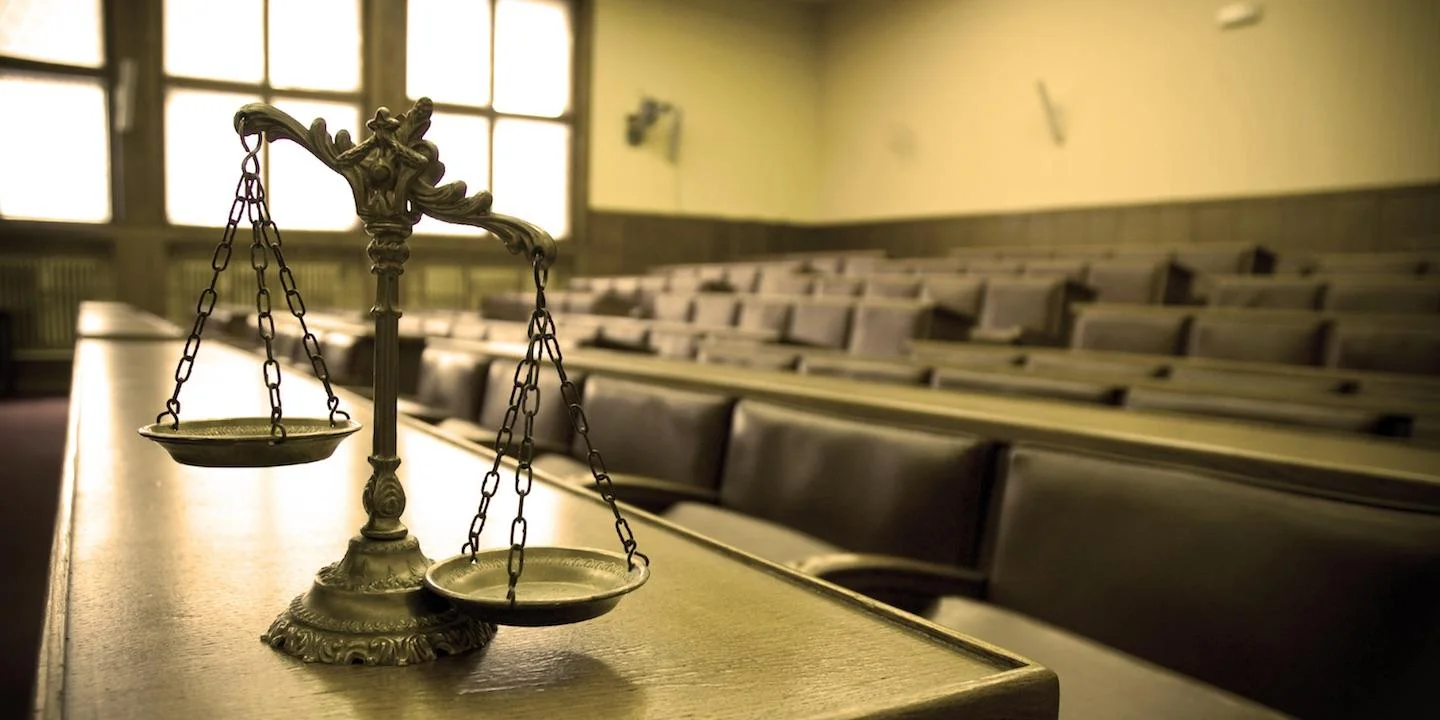BELLEVILLE – Before the trial of murder suspect David Fields in St. Clair County Circuit Court started July 23 – ending in mistrial July 26 - special prosecutor Charles Colburn conceded 23 evidence motions that defense lawyers Brittany Kimble and Ryan Neal presented to Circuit Judge Robert Haida.
The motions opened options for the defense and narrowed them for Colburn.
One allowed Kimble and Neal to argue that prosecution witness Jamie Lott, who shared a bed with victim Carl Silas, had motive to kill him.
One barred testimony that Fields carried a shotgun on a previous occasion.
Ten days before trial was set to begin, Colburn signaled doubt when he objected to video coverage. Haida sustained the objection and kept cameras out.
In jury selection on July 23, Colburn questioned prospects for about 30 seconds while Kimble and Neal questioned them for at least 30 minutes.
Colburn directed two questions at two prospects.
Kimble and Neal asked for volunteers to comment on a range of topics.
Then Kimble asked all prospects to state their news sources and their hobbies.
She reaped a harvest of clues that surely shaped the character of the jury.
Witnesses that Colburn called at trial on July 24 and 25 didn’t help him much.
His crime scene expert hadn’t collected much evidence beyond photographs.
His fingerprint expert hadn’t found any prints.
His firearm expert had examined a gun but it wasn't the one that fired the fatal shots.
Colburn’s first event witness, Latisha Traylor, testified after lunch on July 25. She said she recognized Fields by his eyes, his nose, and his walk.
On cross examination, she told Kimble the lights weren’t on when she saw him. She told Kimble that Fields was family, but she came up blank when Kimble asked her the year of his birth and his high school.
Kimble got her to testify that he walked like many young dudes.
As the day ended, Colburn told Haida he would finish by noon on Friday.
Colburn said he had two event witnesses and three law enforcement witnesses yet to testify.
That meant dozens of persons on his list of potential witnesses wouldn’t testify.
On July 26, he called event witness Michael Taylor, age 16.
When Michael began to testify about a shotgun, Kimble moved for mistrial and Haida granted it.
As for Fields, a move by his attorneys to reduce bond was denied by Haida on Thursday.
Colburn said a status conference is set for Sept. 14, where a new trial date will hopefully be set. He added that he isn't sure when a new trial will be scheduled, but it will take place as soon as witnesses can be lined up.
Colburn said the trial will start over with jury selection.
When asked about the circumstances of the mistrial, Colburn said he could not comment on the proceedings.
Calls to Kimble and Neal seeking post-trial comment were not returned by press time.
U.S. Supreme Court precedent
Any judge who grants a mistrial to a criminal defendant must dismiss all charges if a prosecutor purposely spoiled the proceedings.
The U.S. Supreme Court made that decision in 1982, as a single exception to a rule that a trial after a mistrial doesn’t count as double jeopardy.
Chief Justice William Rehnquist wrote, “Only where the governmental conduct in question is intended to goad the defendant into moving for a mistrial may a defendant raise the bar of double jeopardy to a second trial after having succeeded in aborting the first on his own motion.”
Rehnquist wrote that examining a prosecutor’s intent, though not free from practical difficulties, was a manageable standard to apply.
“Inferring the existence or nonexistence of intent from objective facts and circumstances is a familiar process in our criminal justice system,” he wrote.
Courts over the years have resolved double jeopardy issues with inconsistent decisions.
In 1971, in U.S. v. Jorn, the U.S. Supreme Court held that, “where circumstances develop not attributable to prosecutorial or judicial overreaching, a motion by defendant for mistrial is ordinarily assumed to remove any barrier to reprosecution, even if the defendant’s motion is necessitated by prosecutorial or judicial error.”
Judges nationwide extracted the word overreaching, and adopted it as a standard.
In 1982, in Kennedy v. Oregon, the Supreme Court abolished the standard.
Rehnquist wrote that the Court rejected it because it offered virtually no standards for application and might not aid defendants as a class.
He wrote that the Court’s cases had been stated with less than crystal clarity.
“Every act on the part of a rational prosecutor during a trial is designed to prejudice the defendant by placing before the judge or jury evidence leading to a finding of his guilt,” Rehnquist wrote.
He wrote that where a defense motion for mistrial is necessitated by impropriety designed to avoid an acquittal, reprosecution might well be barred.
He wrote that circumstances under which a defendant may invoke double jeopardy “are limited to those cases in which the conduct giving rise to the successful motion for a mistrial was intended to provoke the defendant into moving for a mistrial.”
